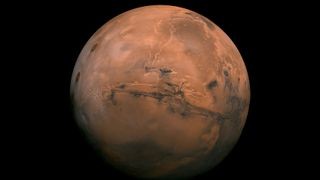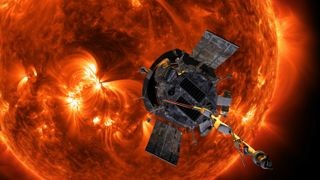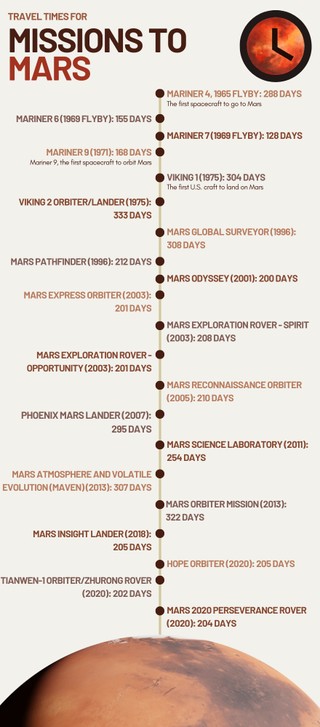Have you ever been curious about the duration of a trip to Mars?
A one-way journey to the Red Planet is estimated to take around nine months, while a round trip could extend to approximately three years.
While these figures offer a general understanding, the actual travel time is subject to various factors. The ever-changing distance between Earth and Mars due to their orbits, and the technology employed to propel spacecraft, are crucial determinants. This article explores the mechanics of Mars travel using current technology and the variables influencing journey length.
Understanding the Distance to Mars for Space Travel Planning
To calculate the travel time to Mars, it’s essential to first understand the distance involved between our planets.
Mars, the fourth planet from the sun, is Earth’s second closest planetary neighbor, with Venus being the closest. However, the distance separating Earth and Mars is not constant; it fluctuates as they journey around the sun.
In the most ideal scenario, where Mars is at its closest point to the sun (perihelion) and Earth is at its farthest (aphelion), the planets could be approximately 33.9 million miles (54.6 million kilometers) apart. Historically, the closest recorded approach occurred in 2003, with a distance of 34.8 million miles (56 million km).
Conversely, when both planets are at their furthest from the sun and positioned on opposite sides, the separation can reach up to 250 million miles (401 million km).
On average, the distance between Earth and Mars is about 140 million miles (225 million km).
Related read: What is the temperature on Mars?
Mars Travel Time at Light Speed: A Theoretical Perspective
 Image of Mars against the black backdrop of space. The planet is a rusty red color.
Image of Mars against the black backdrop of space. The planet is a rusty red color.
Light travels at an astonishing speed of about 186,282 miles per second (299,792 km per second). Considering this, light from Mars would take varying times to reach Earth, depending on planetary alignment:
- Closest Possible Approach: 182 seconds, or about 3.03 minutes.
- Closest Recorded Approach: 187 seconds, or roughly 3.11 minutes.
- Farthest Approach: 1,342 seconds, or approximately 22.4 minutes.
- Average Distance: 751 seconds, or just over 12.5 minutes.
While light speed provides a fascinating perspective, current spacecraft technology operates at significantly slower speeds.
How Fast Can We Get to Mars? Exploring Current Spacecraft Speeds
The fastest spacecraft to date is NASA’s Parker Solar Probe, continually setting new speed records. On December 24, 2024, it achieved a peak speed of 430,000 miles per hour (692,000 km per hour).
 Graphic illustration shows the Parker Solar Probe in front of the blazing sun.
Graphic illustration shows the Parker Solar Probe in front of the blazing sun.
Hypothetically, if we could travel to Mars on the Parker Solar Probe at its peak speed, the journey duration would be:
- Closest Possible Approach: 78.84 hours (around 3.3 days).
- Closest Recorded Approach: 80.93 hours (approximately 3.4 days).
- Farthest Approach: 581.4 hours (about 24.2 days).
- Average Distance: 325.58 hours (roughly 13.6 days).
However, the Parker Solar Probe is designed for solar research, not interplanetary travel to Mars. Missions intended for Mars require different trajectories and considerations, leading to longer travel times.
Expert Insights on Mars Travel Time: Q&A with ESA Mission Analyst Michael Khan
To gain deeper insights into Mars travel times, we consulted Michael Khan, a Senior Mission Analyst at the European Space Agency (ESA).
Michael Khan
Michael Khan specializes in orbital mechanics for space missions at ESA, including journeys to Mars.
Factors Influencing Travel Time to Mars: Energy and Trajectory
According to Khan, the duration to reach Mars primarily depends on the energy expended, referring to the power of the launch vehicle, spacecraft maneuvers, and propellant usage. Space travel is fundamentally about efficient energy management.
For lunar missions, common transfer methods include Hohmann-like transfers and Free Return Transfers. The Hohmann Transfer, often cited as the most energy-efficient, is optimal for shorter durations and specific launch constraints.
Mars missions, being interplanetary, orbit the sun. Energy efficiency remains paramount, complicated by Mars’ eccentric orbit and its orbital plane’s inclination relative to Earth. Mission planners use “pork chop plots” to determine optimal departure and arrival dates and energy requirements.
These plots show Mars transfer opportunities roughly every 25-26 months, with faster (5-8 months) and slower (7-11 months) transfer classes. Slower transfers are often more energy-efficient. A common estimate for Mars travel is about nine months, similar to human gestation, but precise calculations are needed for specific launch dates.
Why Orbiting or Landing Missions Take Longer
Missions designed to orbit or land on Mars face additional complexities. Orbiters require substantial propellant for orbit insertion, while landers need heat shields to withstand atmospheric entry. These factors limit arrival speeds at Mars, favoring Hohmann-like transfers and extending travel durations.
Challenges in Calculating Mars Travel Time: Orbital Mechanics
Previous calculations simplify Mars travel as a straight-line distance. In reality, spacecraft must follow orbital paths around the sun. While straight-line calculations are somewhat relevant for closest approach, they become inaccurate for longer distances.
Another simplification is assuming constant planetary distances during travel. In reality, Earth and Mars move at varying speeds in their orbits. Mission engineers must predict Mars’ position at spacecraft arrival, not departure. It’s akin to aiming at a moving target from a moving platform.
Furthermore, maximizing speed isn’t always the goal for missions requiring orbit insertion. Spacecraft must decelerate upon arrival to enter orbit, rather than just passing by.
Technological advancements in propulsion systems also play a crucial role in determining Mars travel time.
NASA estimates an ideal Mars launch window allows for approximately nine-month journeys. Physics professor Craig C. Patten explains that Earth and Mars alignment for optimal launches occurs roughly every 26 months. This launch window is dictated by the time it takes for Earth and Mars to reach favorable positions relative to each other in their orbits around the sun.
While shorter trips are theoretically possible with increased fuel consumption, current technology and mission constraints often favor energy-efficient, longer routes.
Emerging technologies could drastically reduce travel times. NASA’s Space Launch System (SLS) is designed to accelerate mission capabilities to Mars, potentially including human missions. Future technologies like photon propulsion, using powerful lasers, could theoretically propel robotic spacecraft to Mars in just days. Professor Philip Lubin suggests that a 100-kg robotic spacecraft could reach Mars in three days using Directed Energy Propulsion.
Historical Mars Mission Durations: A Timeline
 Timeline of missions to Mars.
Timeline of missions to Mars.
Historically, Mars missions have varied in duration. The infographic above illustrates the travel times for several past missions to the Red Planet, providing context with their launch dates.
Further Exploration
For more in-depth information, explore NASA’s Moon to Mars overview for lunar and Martian exploration plans. The Conversation offers an informative article on human Mars missions and safe return. For insights into health risks associated with Mars missions, refer to this research paper on space travel health considerations.
References
Join our Space Forums for space discussions and updates. Contact us at [email protected] for news tips or comments.
Stay Updated with the Space.com Newsletter
Get the latest space news, rocket launch updates, skywatching events, and more delivered directly to your inbox.
Daisy Dobrijevic
Reference Editor
Daisy Dobrijevic, a Reference Editor at Space.com, previously wrote for All About Space magazine. She has experience with BBC Sky at Night Magazine and the National Space Centre, communicating space science to the public. With a PhD in plant physiology and a Master’s in Environmental Science, Daisy is passionate about space, particularly solar activity, space weather, and astrotourism.
With contributions from Space.com writers.